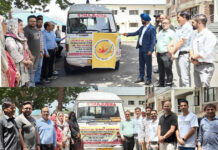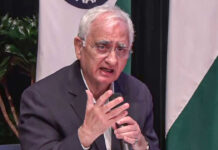Scientists have developed a new test that may detect the novel coronavirus more accurately and quickly, and relieve the pressure on polymerase chain reaction (PCR) based tests currently used in the fight against COVID-19 pandemic. Millions of people have been tested for the novel coronavirus, most using a kit that relies on the PCR, a sensitive method that amplifies SARS-CoV-2 RNA from patient swabs so that tiny amounts of the virus can be detected. However, as the pandemic surges, this laboratory workhorse is showing signs of strain, according to the research published in the journal ACS Nano. Now, researchers including those from the Institute of Environmental Engineering, ETH Zurich in Switzerland, have developed a potentially more accurate diagnostic based on plasmonic photothermal sensing. The method can detect interactions between molecules on the surface of a constructed metallic nanostructure as a local change in refractive index. Health experts agree that expanded testing is crucial for controlling the spread of COVID-19. However, testing in many countries has lagged behind because of limited supplies of some reagents and a backlog of samples awaiting available PCR machines and laboratory personnel. A number of false-negative and -positive test results have been reported, the researchers said. Other methods, such as computed tomography (CT) scanning and culturing, do not provide quick or real time results, they said. Jing Wang from Institute of Environmental Engineering, ETH Zurich, and colleagues wanted to develop a faster, potentially more accurate COVID-19 test for detecting the SARS-CoV-2 virus that could be a practical alternative to PCR. The team made DNA probes that recognised specific SARS-CoV-2 RNA sequences and attached them to gold nanoparticles. When they added pieces of the viral genome, the RNA attached to the complementary probes like a zipper being closed. The team used a laser to heat up the nanoparticles, making it more difficult for imperfectly matched sequences to remain attached, reducing false-positives. For example, a nucleic acid “zipper” missing a couple of teeth — indicating a partial mismatch — would unzip under these conditions. In this way, the researchers could discriminate between SARS-CoV-2 and its close relative, SARS-CoV-1. The assay detected amounts of viral RNA below those present in respiratory swabs in a matter of minutes, the researchers said. Although the test still needs to be tested on intact viral RNA from patient samples, it could help relieve the current pressure on PCR-based tests, they said.

Dogra Herald is the media of J & K, breaking language and geographical barriers, connecting J & K to the rest of India.
0191 245 4946
info@dograherald.com
Latest articles
‘Conspiracy to convert Parliament into platform for BJP’: Mallikarjun Kharge on mass suspensions
NEW DELHI, Dec 21As the suspensions in the Parliament reached 146 with three more Congress Lok Sabha MPs being suspended Thursday, Congress...
J&K DDC polls: 17 govt employees suspended for MCC violation
iamjkstarr - 0
The Jammu and Kashmir administration has "temporarily" suspended 17 government employees, including seven teachers and three policemen, in Kishtwar district for allegedly...
India has capability to hit its targets within & across border: Rajnath
DOGRA HERALD BUREAUKATHUA, Apr 15Defence Minister Rajnath Singh on Monday said India under Prime Minister Narendra Modi’s leadership has shown to the...



























